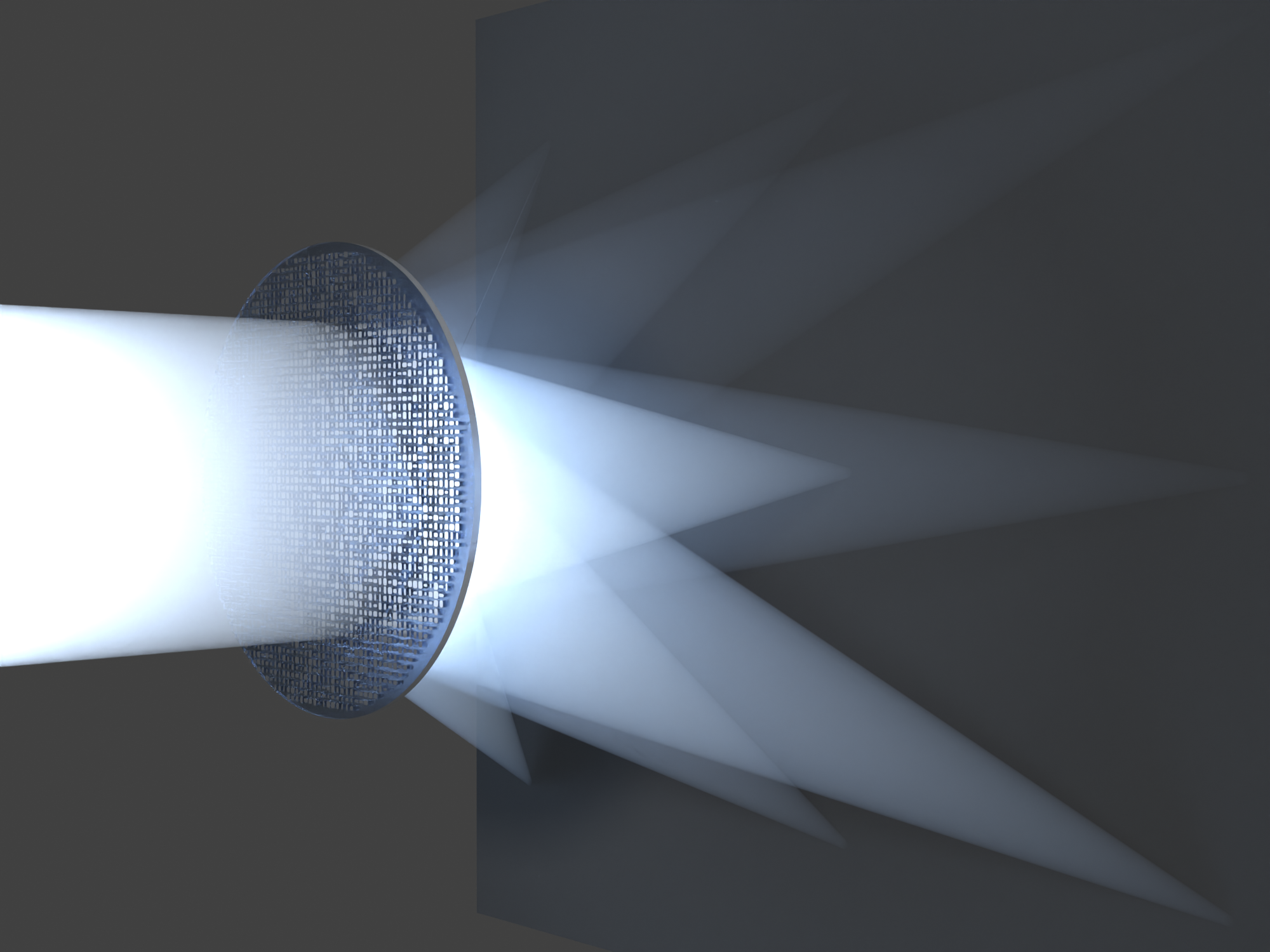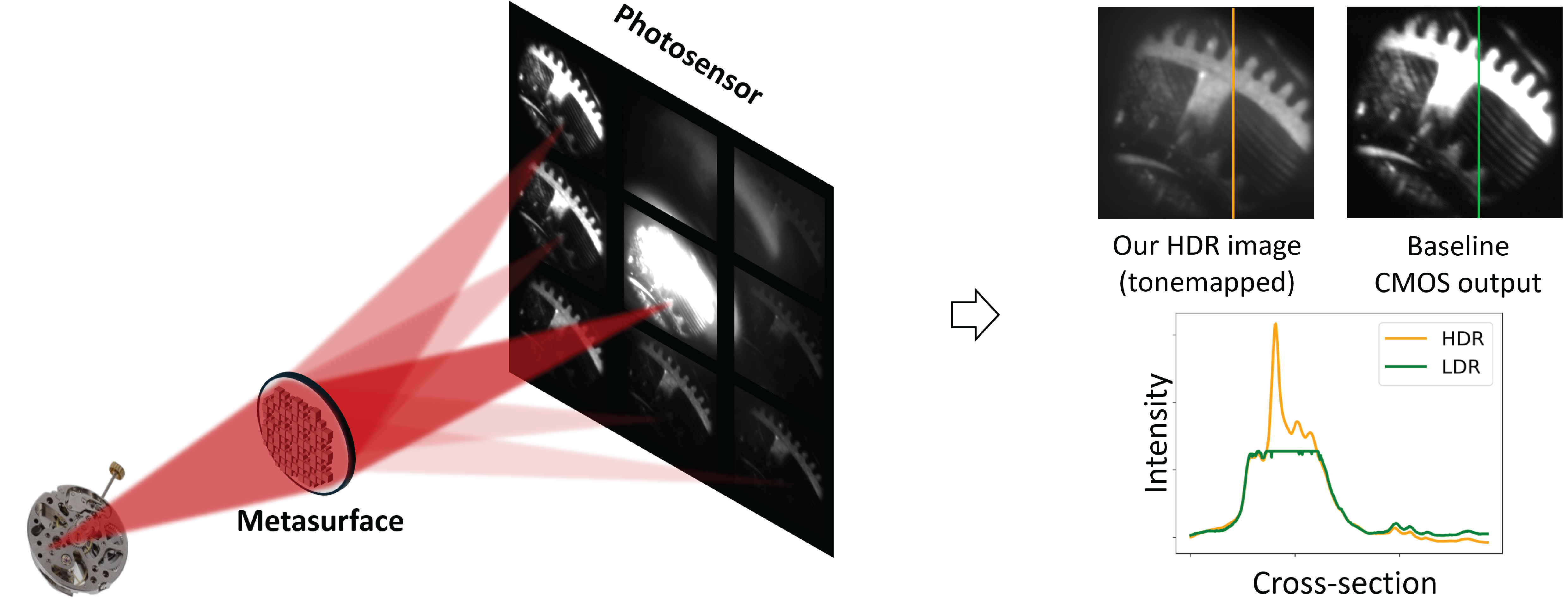

Overview.
Metasurfaces offer transformative advantages over traditional refractive optics by enabling multi-functionality—independently modulating incident light based on spatial position, wavelength, or polarization. This capability supports the simultaneous capture of multiple measurements in a single shot or the integration of diverse imaging modalities within a compact, monocular platform, resulting in low latency, reduced hardware complexity, and precise cross-modal registration.
This project page showcases a series of innovations of monocular metasurface-based imaging systems from Guo Lab @ Purdue ECE (presented from the latest to the oldest). These systems achieve functionalties that previously required sequential measurements or separate hardware platforms.
We will release all information and collected data of our imaging systems on this project page. If the information you need cannot be found, please contact us at qiguo_AT_purdue_DOT_edu.
Jump to:

Abstract. We present a metasurface camera that jointly performs highdynamic range (HDR) and hyperspectral imaging in a snapshot. The system integrates exposure bracketing and computed tomography imaging spectrometry (CTIS) by simultaneously forming multiple spatially multiplexed projections with unique power ratios and chromatic aberrations on a photosensor. The measurements are subsequently processed through a deep reconstruction model to generate an HDR image and a hyperspectral datacube. Our simulation studies show that the proposed system achieves higher reconstruction accuracy than previous snapshot hyperspectral imaging methods on benchmark datasets. We assemble a working prototype and demonstrate snapshot reconstruction of 60 dB dynamic range and 10 nm spectral resolution from 600 nm to 700 nm on real-world scenes from a monochrome photosensor.

Abstract. We present MetaHDR, which is a single-shot high-dynamic range (HDR) imaging and sensing system using a multifunctional metasurface. The metasurface is capable of splitting an incident beam into multiple focusing beams with different amounts of power, simultaneously forming multiple low dynamic range (LDR) images with distinct irradiance on a photosensor. Then, the LDR images are jointly processed using a gradient-based HDR fusion algorithm, which is shown to be effective in attenuating the residual light artifacts incurred by the metasurface and the lens flare. MetaHDR achieves single-shot HDR photography and videography that increases the dynamic range by at least 50 dB compared to the original dynamic range of the photosensor. It can also perform single-shot HDR sensing, including reflectance calibration and surface curvature estimation of reflective materials. MetaHDR’s demonstrated functionalities could be broadly applied in surveillance and security, microscopic imaging, advanced manufacturing, etc.